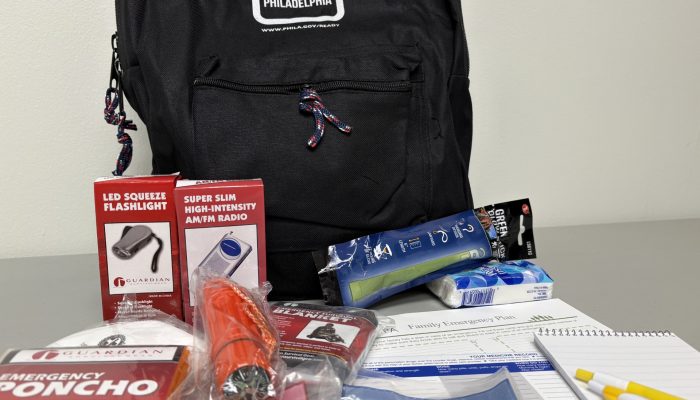No one plans to have an emergency, but you can plan and be prepared for one if it happens to you.
To highlight the critical need to be ready, September is National Preparedness Month.
OEM’s Emergency Management Liaison Officers see the importance of being prepared when they respond to emergency situations.
That’s why our office wants to give you a simple step that can help you if you find yourself in an emergency circumstance.
Fires, gas leaks, flooding, loss of heating or cooling, or other disasters may cause you to need to evacuate your home for a prolonged time. Having essentials packed and ready if you need to leave in a moment’s notice is important.
If you need to evacuate your house quickly, having a Go-Kit that you can grab is key. Your Go-Kit will have some essentials that can benefit your health and home as well as assisting in your recovery process.
When building your Go-Kit, gather critical supplies, like water, non-perishable food, and medicine.
A Go-Kit should include three days of supplies you can carry with you. Customize your kit to meet your household’s specific needs.
If you have pets, include leashes, carriers, food, water, bowls, litter, litterbox and photos of you with your pet in case you are separated.
Don’t forget phone or device charging cords and portable chargers.
Some of the most important items may be on paper, a thumb drive, or in the Cloud.
Having important phone numbers of family, friends, and doctors written down or stored somewhere is key. It’s also important to document what medications and their dosages you are taking.
You can find these forms on our website.
This next part of your Go-Kit is crucial. Having copies of your ID and your insurance will help aide you on getting back on your feet. This can be auto insurance, home or renter’s insurance, rental policy, and flood insurance.
Also, give yourself an insurance check-up. Keep in mind flood insurance is not typically covered in your home-owners policy and could take 30-days to take effect.
Have several ways to save documents by making photocopies, taking pictures on your phone, emailing yourself, saving in the Cloud, and downloading on a thumb drive.
Disaster doesn’t plan ahead, but you can!




